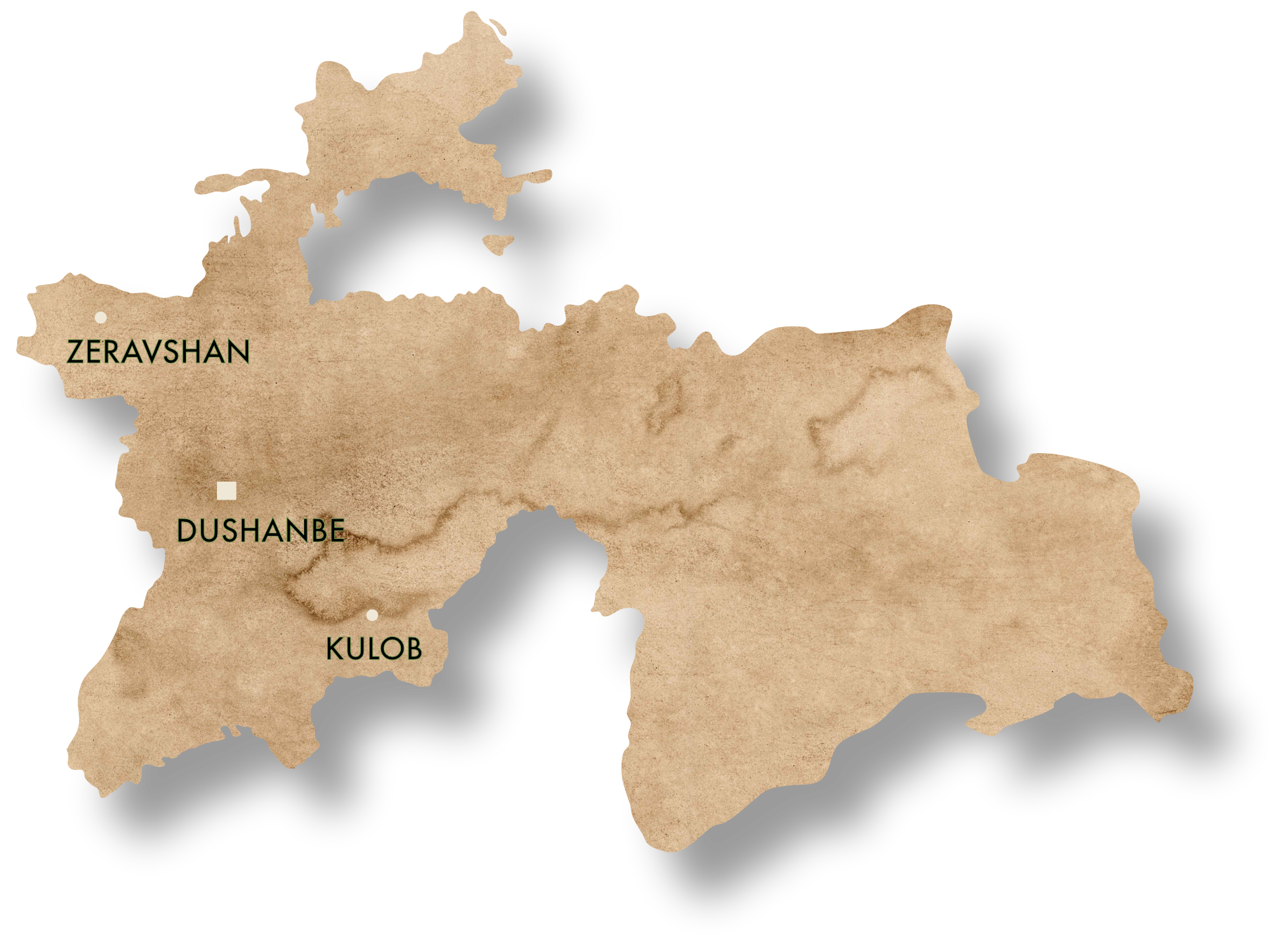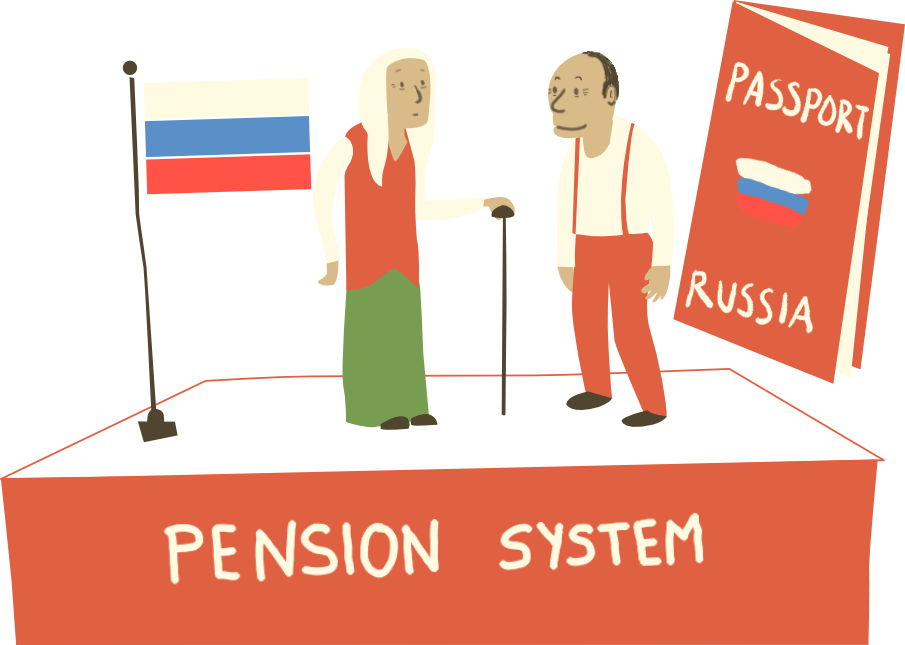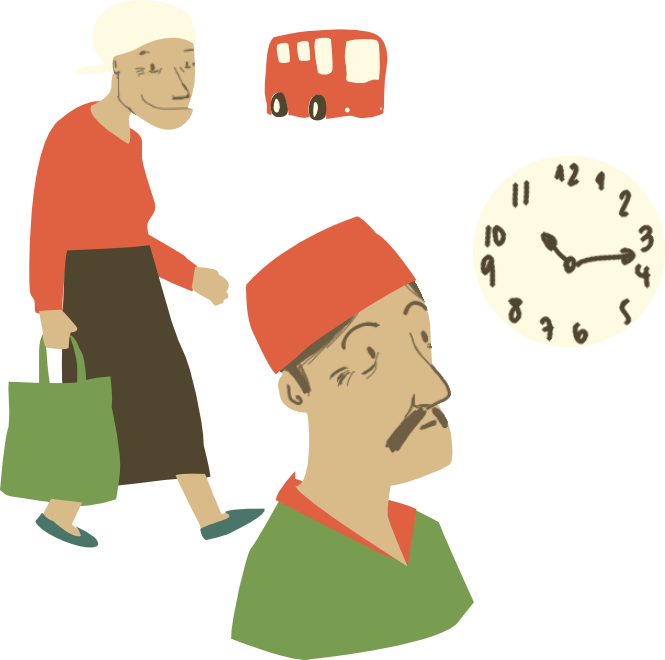
GENDER AND AGEING AMIDST LABOUR MIGRATION IN TAJIKISTAN
Swetlana Torno
Since the early 1990s, transnational labour migration has become a widespread livelihood strategy in Tajikistan. Initially, migrant laborers were young and middle-aged men who primarily travelled to Russia on a seasonal or perennial basis to support their wives, children, siblings, and aging parents. Over time, the proportion of women migrant workers and permanent relocation of entire families has increased, and there is currently a rising number of Tajik nationals applying for Russian citizenship. These migratory dynamics have implications for the organization of eldercare both within Tajikistan and across borders, and often lead to increased mobility for aging parents on a transnational scale.

As children settle in Russia, it is now the older parents who are travelling across borders to lend a hand in caring for their grandchildren while also discovering life in Russia. For many migrant children, enabling their aging parents to see new places is seen as fulfilling their obligations as a caring and respectful child. Back in Tajikistan, older adults proudly recount the city attractions and shopping malls their children took them to during their time abroad. However, they would also point out the lack of sociality among neighbours and the diminished respect towards senior citizens in Russia.
Since the early 1990s, transnational labour migration has become a widespread livelihood strategy in Tajikistan. Initially, migrant laborers were young and middle-aged men who primarily travelled to Russia on a seasonal or perennial basis to support their wives, children, siblings, and aging parents. Over time, the proportion of women migrant workers and permanent relocation of entire families has increased, and there is currently a rising number of Tajik nationals applying for Russian citizenship. These migratory dynamics have implications for the organization of eldercare both within Tajikistan and across borders, and often lead to increased mobility for aging parents on a transnational scale.
As children settle in Russia, it is now the older parents who are travelling across borders to lend a hand in caring for their grandchildren while also discovering life in Russia. For many migrant children, enabling their aging parents to see new places is seen as fulfilling their obligations as a caring and respectful child. Back in Tajikistan, older adults proudly recount the city attractions and shopping malls their children took them to during their time abroad. However, they would also point out the lack of sociality among neighbours and the diminished respect towards senior citizens in Russia.


Running in an east-west direction, the Zeravshan valley cuts across two high mountain ranges in Tajikistan’s north before opening up to the plains surrounding the city of Samarkand in Uzbekistan. The slopes along the eponymous river have been inhabited since antiquity and important trade routes ran through the valley. Under the Soviet rule, the establishment of large collective farms displaced much of former merchandise, handicraft, agricultural production and animal husbandry, with the latter two becoming the main focus. Currently, subsistence economy, agriculture, and labor migration are major sources of livelihood, while many families also move to large cities in search of better job opportunities.
Tajikistan’s capital city Dushanbe serves as an important economic, educational, administrative and cultural centre that is currently experiencing a large construction boom. The city offers numerous employment opportunities, leading to a doubling of its population since the 1990s. As of January 2022, it was home to approximately 1,2 million inhabitants, with around 102,600 of them aged 55 and above. Dushanbe’s prominence within the country can be traced back to the Soviet era when it was designated as the capital of the Tajik Autonomous Soviet Socialist Republic in 1924 and received substantial investments for further development. Prior to that, the city served a market town situated at the crossroads of significant trading routes.
Resembling more a provincial town than a vibrant urban centre, Kulob is Tajikistan’s fourth largest city that had around 105,800 inhabitants in January 2022. It is located in a wide river valley in the South of the Khatlon province, about 200 km away from the capital city Dushanbe and 55 km from the Tajik-Afghan border. Despite serving as a regional capital for two decades during the Soviet era, the city did not experience significant industrialization, with much of its economic activities focusing on agricultural production and its processing. Present-day Kulob is home to number of centres of higher education, medical facilities, regional administration and an international airport that caters to many migrant labourers from the region.
Please click on one of the hotspots
Background
Labour migration became widespread in Tajikistan in light of protracted economic stagnation that followed the dissolution of the Soviet Union (in 1991) and the Tajik civil war (from
1992-1997). An overwhelming majority of Tajik citizens, approximately 1,5 out of Tajikistan’s total population of 9,8 million, are migrant workers in Russia. The mobility of younger generations has spurred transborder movements of Tajik older adults, who mostly perceive Russia through former Soviet agitation and contemporary public media. The lift of the iron curtain has also opened travel options beyond the borders of the USSR. Tajik senior citizens now visit countries such as Iran, India and China for medical purposes and undertake the Muslim pilgrimage to Mecca, which was not possible in earlier times.
Relational (im)mobilities across scales
Transgenerational citizenship practices
In recent years, Russian government relaxed the procedures for acquiring Russian citizenship. For instance, children can now pass on their citizenship to their parents and vice versa. As a result, many older adults from Tajikistan take advantage of this opportunity to first get hold of a Russian passport and subsequently apply for a pension in Russia. Referring to it as the ‘Soviet pension’, senior citizens capitalize on the years they worked under the Soviet rule.

Transnational religious mobility
Among the five pillars of Islam is the duty to perform the pilgrimage to Mecca, known as the Hajj, once in a lifetime. This opportunity became available to Soviet Muslims only after the dissolution of the USSR. With improved living standards and establishment of Muslim travel agencies across Tajikistan, going on the Hajj has become a common practice among elderly Tajik individuals.

Gendered im/mobilities over the life course
Throughout their lives, men and women in Tajikistan experience different stages of (im)mobility. Men primarily serve as breadwinners and spend a significant amount of time outside the house, while young and middle-aged women are often confined to household duties. In later life, as senior women pass on household responsibilities, they gain greater spatial mobility. On the other hand, some senior men struggle with the transition to retirement and finding a meaningful occupation at home.

Relational (im)mobilities across scales
Transgenerational citizenship practices
In recent years, Russian government relaxed the procedures for acquiring Russian citizenship. For instance, children can now pass on their citizenship to their parents and vice versa. As a result, many older adults from Tajikistan take advantage of this opportunity to first get hold of a Russian passport and subsequently apply for a pension in Russia. Referring to it as the ‘Soviet pension’, senior citizens capitalize on the years they worked under the Soviet rul
Transnational religious mobility
Among the five pillars of Islam is the duty to perform the pilgrimage to Mecca, known as the Hajj, once in a lifetime. This opportunity became available to Soviet Muslims only after the dissolution of the USSR. With improved living standards and establishment of Muslim travel agencies across Tajikistan, going on the Hajj has become a common practice among elderly Tajik individuals.
Gendered im/mobilities over the life course
Throughout their lives, men and women in Tajikistan experience different stages of (im)mobility. Men primarily serve as breadwinners and spend a significant amount of time outside the house, while young and middle-aged women are often confined to household duties. In later life, as senior women pass on household responsibilities, they gain greater spatial mobility. On the other hand, some senior men struggle with the transition to retirement and finding a meaningful occupation at home.
Over 40 percent of Tajik households have a family member abroad. Of these, an overwhelming majority are migrant workers in Russia
In 2021, over 103,000 Tajik nationals received a Russian citizenship. In 2022, their number rose to more than 173,000.
Among Tajik nationals applying for Russian citizenship are older adults. Having received Russian citizenship, many claim an old age pension in Russia.

